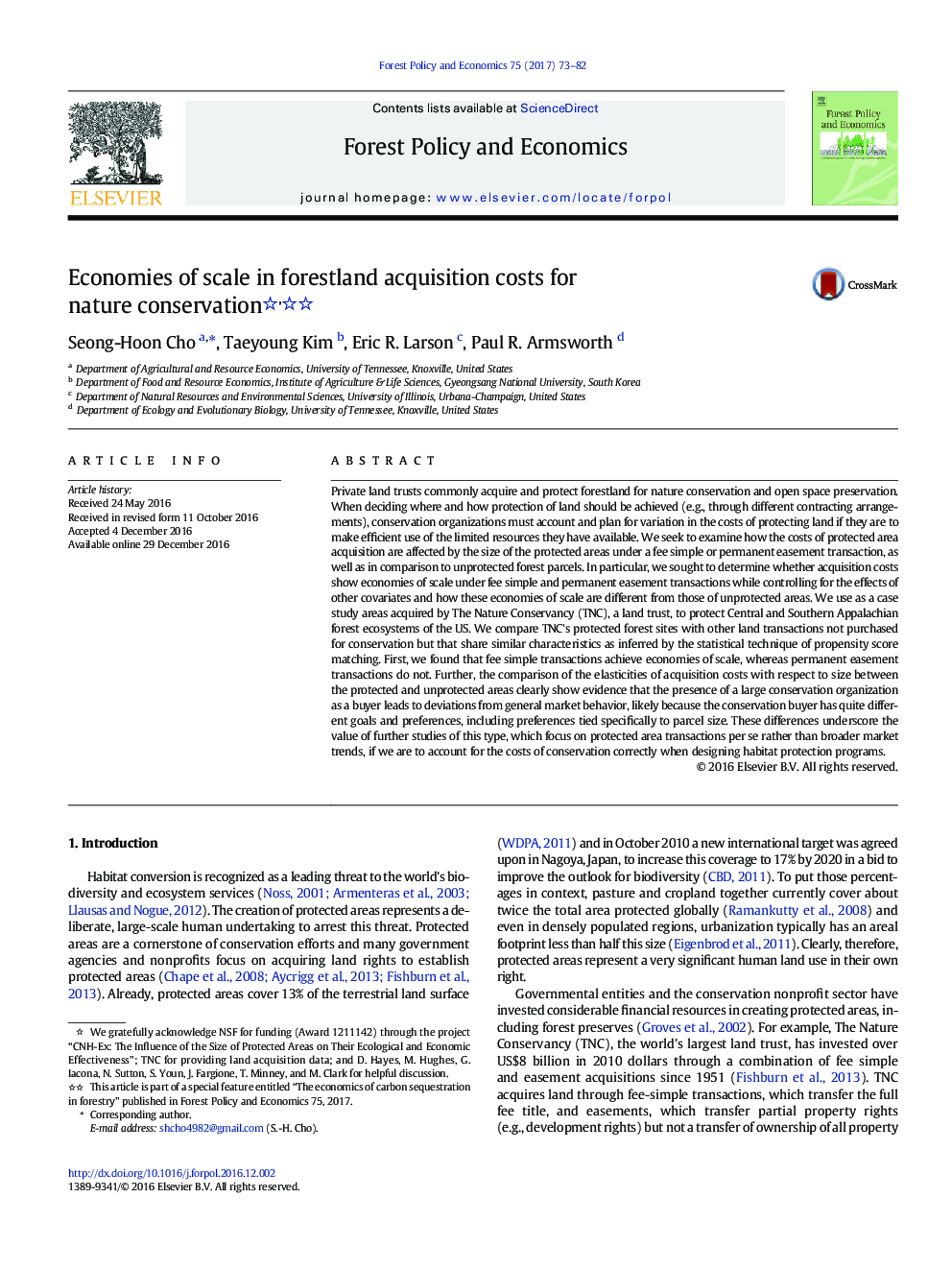| کد مقاله | کد نشریه | سال انتشار | مقاله انگلیسی | نسخه تمام متن |
|---|---|---|---|---|
| 6459793 | 1421664 | 2017 | 10 صفحه PDF | دانلود رایگان |
- We compare TNC's protected forest sites with other, similar land transactions.
- We found that fee simple transactions to protect land achieve economies of scale.
- We did not find economies of scale in costs using permanent easements.
- Unprotected forest areas achieve stronger economies of scale than protected forest areas.
- Equilibrium in wider land market are constrained by TNC's motivation for acquisitions.
Private land trusts commonly acquire and protect forestland for nature conservation and open space preservation. When deciding where and how protection of land should be achieved (e.g., through different contracting arrangements), conservation organizations must account and plan for variation in the costs of protecting land if they are to make efficient use of the limited resources they have available. We seek to examine how the costs of protected area acquisition are affected by the size of the protected areas under a fee simple or permanent easement transaction, as well as in comparison to unprotected forest parcels. In particular, we sought to determine whether acquisition costs show economies of scale under fee simple and permanent easement transactions while controlling for the effects of other covariates and how these economies of scale are different from those of unprotected areas. We use as a case study areas acquired by The Nature Conservancy (TNC), a land trust, to protect Central and Southern Appalachian forest ecosystems of the US. We compare TNC's protected forest sites with other land transactions not purchased for conservation but that share similar characteristics as inferred by the statistical technique of propensity score matching. First, we found that fee simple transactions achieve economies of scale, whereas permanent easement transactions do not. Further, the comparison of the elasticities of acquisition costs with respect to size between the protected and unprotected areas clearly show evidence that the presence of a large conservation organization as a buyer leads to deviations from general market behavior, likely because the conservation buyer has quite different goals and preferences, including preferences tied specifically to parcel size. These differences underscore the value of further studies of this type, which focus on protected area transactions per se rather than broader market trends, if we are to account for the costs of conservation correctly when designing habitat protection programs.
Journal: Forest Policy and Economics - Volume 75, February 2017, Pages 73-82
